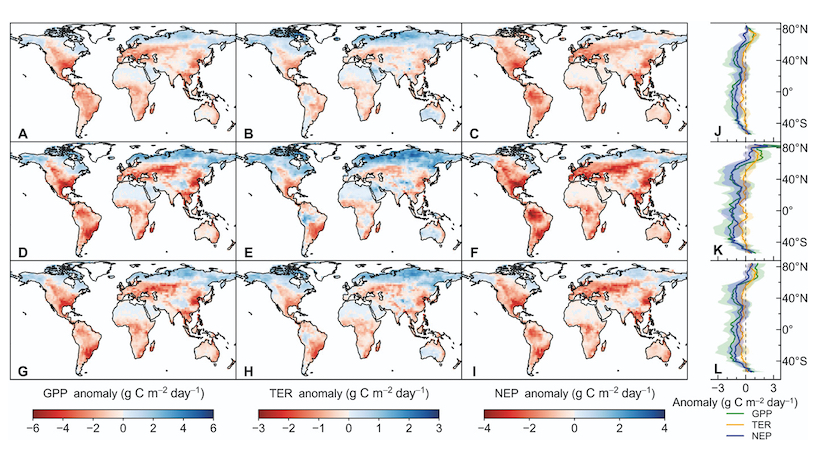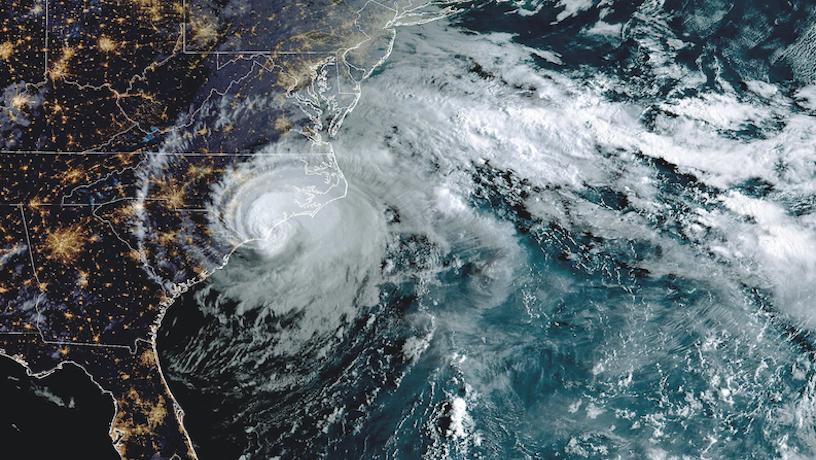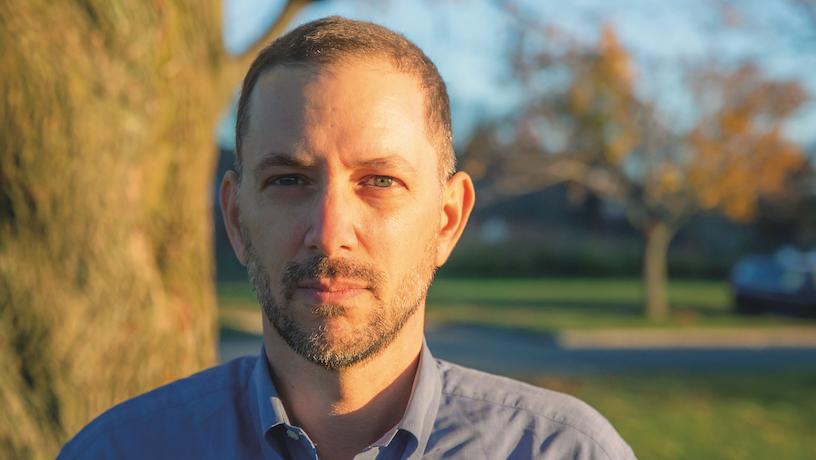A Less Hazy Forecast
Climate modelers use machine learning and novel statistical methods to paint a clearer picture

Anomalies of GPP, TER, and NEP due to extreme high VPD and low SM in CMIP5 models.

Comparison of return periods over the climatology 1979–2013.

Pierre Gentine
In January 2020, Miami floated the idea of ceding neighborhoods to rising seas; this spring, warming waters in the Gulf of Mexico fueled a record outbreak of deadly tornadoes across the southern U.S. By fall, more than five million acres and numerous lives had been lost to wildfires burning up and down the West Coast.
Our climate is changing. For more than 50 years, climate models have provided vital data on why and how, repeatedly accurately predicting broad trends in global warming. But for communities in the path of increasingly extreme weather, rising seas, and expanding heat waves, the emerging need is for specific data on near-term timelines.
On that, “these models are quite uncertain,” says Pierre Gentine, associate professor of earth and environmental engineering. “So, we don’t have the necessary information to help us adapt and mitigate.”
That could soon change. Even as the climate reaches a pivotal inflection point, the science of climate prediction may have as well. Applying advances in machine learning and novel statistical methods, Columbia researchers have found encouraging results by plugging observational data into simulations and generating synthetic storms via statistical modeling as a way to help fill crucial knowledge gaps.
Those gaps stem from limitations in current understanding of some climate physics. For instance, clouds are a driving force in regulating the system, but scientists haven’t yet unlocked the fundamental science underpinning their structure.
Observational data makes you feel humble. It always teaches you something.
New research by Gentine’s group shows that’s one area where machine learning could quickly shed new light. Approaching an old quandary from a new angle, the engineers designed an experiment that replaced a less well-understood phenomenon—cloud behavior—with observational data from satellites and fine-scale simulations, using a neural network to crunch fine-scale data on how clouds transfer heat and moisture and reflect the sun’s rays. It worked: in idealized setups, their neural networks produced realistic predictions.
“Observational data makes you feel humble,” Gentine says. “It always teaches you something.”
His team named their database the Cloud Brain; they hope a similar tactic could make models smarter in many ways. The biosphere is home to millions of ecosystems, each a mini-feedback mechanism of its own, and next on Gentine’s wish list is a tool to help separate the forest from the trees.
Historically, as plants take up atmospheric carbon dioxide, they’ve operated as a mitigating force on climate change. But whether that remains true in a warmer future is unclear. Instead, his research suggests higher temperatures and drier conditions might compromise a plant’s ability to absorb carbon. Using field data on photosynthesis of individual leaves under different climatic conditions, his group seeks to extrapolate out how emergent properties of forests could impact carbon uptake on a hotter planet. Going forward, Gentine is building partnerships with Elias Bareinboim, associate professor of computer science, and Carl Vondrick, assistant professor of computer science, to look at how AI can supercharge these efforts.
While much of the conversation about global warming centers around the warming, other aspects, such as wind speeds, could prove more devastating in the shorter term.
Take tornadoes, which are born, wreak havoc, and die within minutes. Weather forecasters can’t even offer reliable predictions about their capricious behavior, let alone complex climate models operating on 50- to 100-year timescales.


Michael Tippett

Adam Sobel
Michael Tippett, associate professor of applied math, seeks to forecast seasonal frequency for severe thunderstorms. Adam Sobel, professor of applied physics and applied math, works to do the same for hurricanes. The two often collaborate, as with their current project unearthing correlations between larger climate patterns and localized extreme weather. Once correlations are established, they apply an innovative methodology combining physics and statistics to generate synthetic storms in order to extrapolate not just the likelihood of increasing frequency and strength, but also whether shifting patterns will translate into new kinds of risks and areas of vulnerability.
“Weather models can be stripped for useful parts,” says Tippett. “There are statistical relationships between what models can do and what you’d like to know.”
One thing physics-based models do is roughly predict when ingredients for severe weather—wind direction, rising air, rainfall—could materialize over wide areas, one around the size of, say, Albany. By mapping this against observational weather data, Tippett can assess whether ingredients exist for more tornado outbreaks, more frequent lightning, or more damaging hail. Ultimately, “I’m looking for statistical relationships for climate change that can hold up for monthly timescales,” he says.
It’s not just a matter of when patterns will shift, but also to where. Under the auspices of President Bollinger’s Global Innovation Fund, Sobel, also director of the Columbia Initiative on Extreme Weather and Climate, and Kyle Mandli, associate professor of applied math, teamed up with the Columbia Global Center|Mumbai to examine what would happen if that city took a direct hit from a synthetic storm. Their thought experiment has useful applications for coastal populations that have never experienced a hurricane—but may soon.
This approach can’t forecast when one might hit, but it can quickly and cheaply deliver actionable data about how to build in resilience against when one does. As a consequence, this work has caught the attention of the insurance industry, which has come to understand global warming as a significant threat to business as usual.
“This is exploring what uncertainty means and making rational decisions in the face of it,” says Sobel. “Our job is to explain the nuance of that.”
